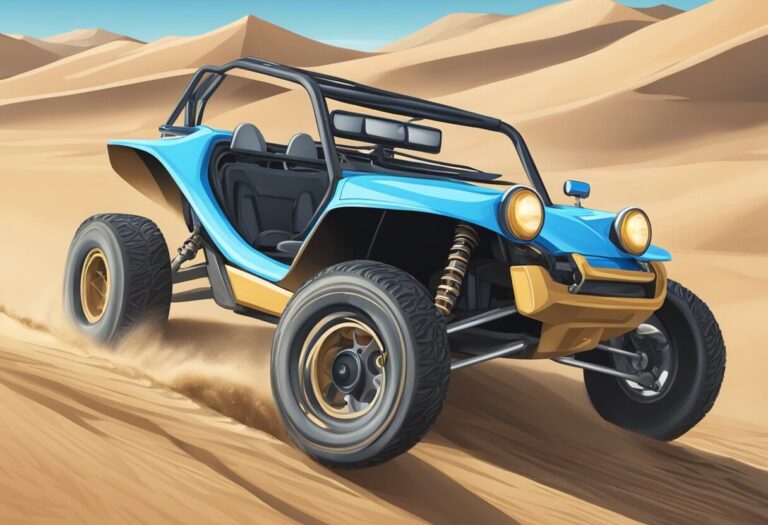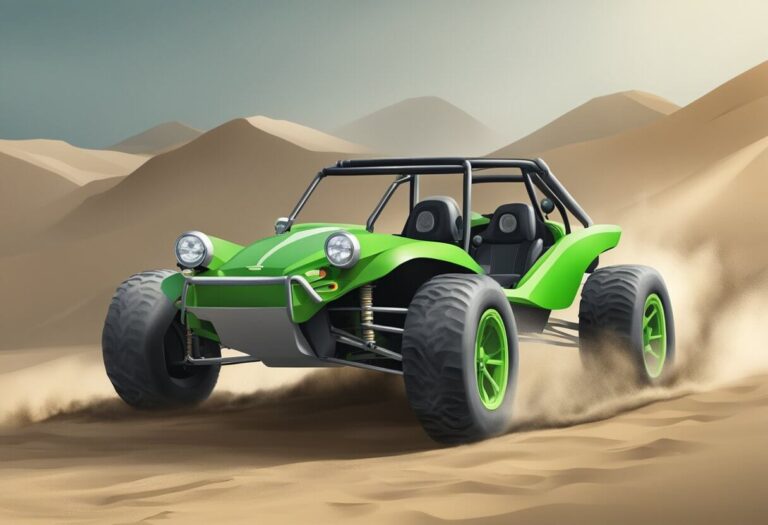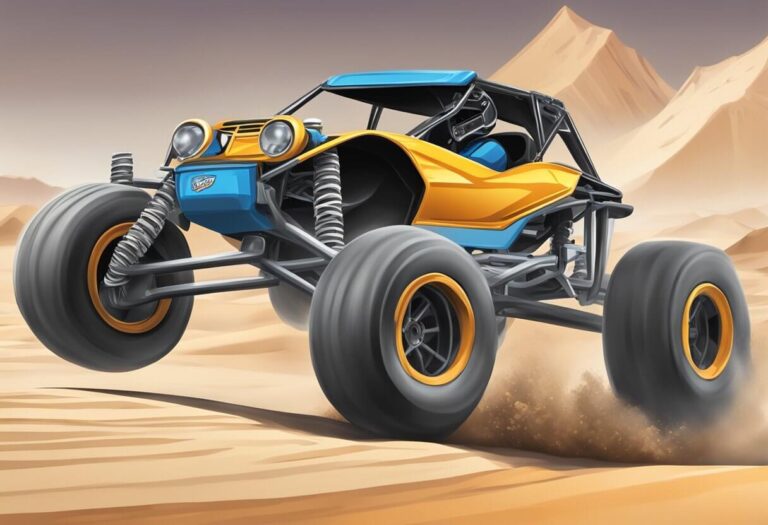Dune Buggy Steering Wheel: A Comprehensive Guide

Dune buggies are a popular off-road vehicle that provides an exciting and adventurous driving experience. One of the essential components of a dune buggy is the steering wheel, which provides the driver with control and precision. The steering wheel is responsible for directing the vehicle’s movement, and it is crucial to choose the right one to ensure a smooth and safe ride.
Dune buggy steering wheels come in a variety of shapes, sizes, and materials, making it easy for drivers to customize their vehicles to their liking. Some of the most common materials used for steering wheels include wood, leather, and aluminum. Each material has its unique characteristics and benefits, and drivers should choose one that suits their driving style and preferences.
Key Takeaways
- Dune buggy steering wheels are an essential component of the vehicle that provides control and precision.
- Steering wheels come in different shapes, sizes, and materials, allowing drivers to customize their vehicles.
- Drivers should choose a steering wheel that suits their driving style and preferences.
Basics of Dune Buggy Steering Systems
Dune buggies are off-road vehicles that require a reliable and efficient steering system to navigate through rough terrain. A steering system consists of three main components: the steering wheel, the steering mechanism, and the steering column. Each of these components plays a crucial role in ensuring that the driver has complete control over the vehicle.
Steering Wheel Design
The steering wheel is the primary control interface between the driver and the vehicle. The design of the steering wheel should be ergonomic, comfortable, and easy to grip. Dune buggy steering wheels are typically smaller in diameter than traditional car steering wheels. This is because smaller steering wheels offer greater maneuverability and control in tight spaces. Additionally, many dune buggy steering wheels are designed to be removable, allowing for easy access to the vehicle’s interior.
Steering Mechanism
The steering mechanism is responsible for translating the driver’s input from the steering wheel into the movement of the vehicle’s wheels. There are two main types of steering mechanisms used in dune buggies: rack and pinion and recirculating ball. Rack and pinion steering is a more modern design that offers greater precision and responsiveness. Recirculating ball steering is an older design that is still commonly used in off-road vehicles due to its durability and reliability.
Steering Column
The steering column connects the steering wheel to the steering mechanism. It is responsible for transmitting the driver’s input from the steering wheel to the steering mechanism. Dune buggy steering columns are typically shorter than traditional car steering columns. This is because shorter columns offer greater maneuverability and control in tight spaces.
A reliable and efficient steering system is crucial for any dune buggy. The steering wheel, mechanism, and column ensure driver control over the vehicle. Understanding dune buggy steering system basics allows informed component selection.
Installation of Steering Wheels
Mounting the Steering Wheel
Mounting a steering wheel on a dune buggy is a relatively simple process that can be completed with a few basic tools. The first step is to ensure that the steering wheel is compatible with the steering column and is the correct size for the driver. Most dune buggies use a standard 3-bolt mounting pattern, so it is important to ensure that the steering wheel matches this pattern.
To mount the steering wheel, first, remove the horn button or center cap from the steering wheel. Then, align the mounting holes on the steering wheel with the mounting holes on the steering column. Insert the mounting bolts through the holes and tighten them securely with a wrench.
Connecting the Steering Column
Once the steering wheel is mounted, the next step is to connect the steering column to the steering box. The steering column is the shaft that connects the steering wheel to the steering box, which is responsible for turning the front wheels of the dune buggy.
To connect the steering column, first, locate the steering box and the steering column. The steering box is typically located at the front of the dune buggy, while the steering column runs from the steering wheel to the steering box.
Align the splines on the steering column with the splines on the steering box and slide the two together. Once the splines are engaged, tighten the steering column bolt to secure the steering column in place.
The steering column must be securely connected without wobbling or movement during driving. A loose steering column can cause loss of vehicle control, creating danger.
Installing a steering wheel on a dune buggy is relatively simple with basic tools. Follow the outlined steps to ensure secure steering wheel mounting and proper steering column connection for safe, reliable dune buggy operation.
Types of Steering Wheels
When it comes to dune buggy steering wheels, there are several types to choose from. Each type has its own unique features and benefits. In this section, we will explore the three main types of steering wheels commonly used in dune buggies: standard, performance, and custom.
Standard Steering Wheels
Standard steering wheels are the most common type of steering wheel found in dune buggies. They are typically made of a hard plastic material and have a simple design. These steering wheels are affordable and easy to replace. They come in a variety of colors and sizes, making it easy to find one that fits your style and needs.
Performance Steering Wheels
Performance steering wheels are designed to provide better handling and control. They are typically made of a lightweight material such as aluminum or carbon fiber. These steering wheels are more expensive than standard steering wheels but provide better performance. They are often used in racing and high-performance dune buggies.
Custom Steering Wheels
Custom steering wheels are designed to provide a unique look and feel. They are often made of high-quality materials such as leather or wood and can be customized with a variety of colors and designs. These steering wheels are more expensive than standard and performance steering wheels but provide a personalized touch to your dune buggy.
Steering Wheel Materials
When it comes to dune buggy steering wheels, there are several materials to choose from. Each material has its own unique advantages and disadvantages. In this section, we will discuss the three most popular materials for dune buggy steering wheels: polyurethane, leather, and wood.
Polyurethane Steering Wheels
Polyurethane is a popular material for dune buggy steering wheels due to its durability and affordability. Polyurethane steering wheels are resistant to wear and tear, making them a great choice for off-road vehicles. They also provide a comfortable grip and are easy to clean.
Leather Steering Wheels
Leather steering wheels are a popular choice for those who want a luxurious feel to their dune buggy. Leather is a durable material that provides a comfortable grip and a stylish look. However, leather steering wheels can be more expensive than other materials and require more maintenance to keep them looking their best.
Wooden Steering Wheels
Wooden steering wheels provide a classic look to dune buggies. They are often made from high-quality hardwoods, such as mahogany or walnut, and can be customized with different finishes and stains. Wooden steering wheels are also durable and provide a comfortable grip. However, they can be more expensive than other materials and require more maintenance to prevent cracking or warping.
Maintenance and Care
Regular Inspection
To ensure the longevity and proper functioning of the dune buggy steering wheel, it is essential to conduct regular inspections. The driver should inspect the steering wheel, steering column, and all associated components regularly. This inspection should include checking for any loose or damaged parts, such as bolts, screws, or nuts. Additionally, the driver should check the steering wheel’s alignment and make sure it is centered correctly.
Cleaning and Preservation
Cleaning and preserving the dune buggy steering wheel is crucial to maintain its appearance and functionality. The driver should clean the steering wheel regularly to prevent dirt and grime buildup that can lead to wear and tear. A mild soap solution and a damp cloth can be used to clean the steering wheel. It is crucial to avoid using harsh chemicals that can damage the steering wheel’s surface.
To preserve the steering wheel’s surface, the driver can apply a protective coating or spray. This coating can help prevent damage from UV rays and other environmental factors. Additionally, the driver should store the dune buggy in a dry and covered area to prevent any moisture buildup that can lead to rust and corrosion.
Wear and Tear Management
Over time, the dune buggy steering wheel can experience wear and tear due to regular use. The driver should be aware of any signs of wear and tear, such as cracks or chips in the steering wheel’s surface. If any damage is detected, the driver should replace the steering wheel or the damaged components immediately.
Furthermore, the driver should be aware of any abnormal sounds or vibrations while driving the dune buggy. These sounds and vibrations can be signs of a more significant steering system issue that requires professional attention. It is crucial to address any steering system issues promptly to prevent accidents and ensure the dune buggy’s safe operation.
Safety Considerations
When it comes to dune buggy steering wheels, safety is a top priority. There are various features and mechanisms that can help ensure the safety of the driver and passengers. Here are some important considerations to keep in mind:
Steering Wheel Locking Mechanisms
One important safety feature to consider is a locking mechanism for the steering wheel. This can help prevent theft and unauthorized use of the vehicle. Some dune buggy steering wheels come with built-in locking mechanisms, while others may require a separate locking device to be installed. It’s important to choose a locking mechanism that is easy to use and provides a secure lock.
Impact Absorption Features
Another important safety consideration is the presence of impact absorption features in the steering wheel. In the event of a collision or impact, these features can help reduce the risk of injury to the driver or passengers. Some dune buggy steering wheels may feature padded or cushioned grips, while others may have built-in shock-absorbing materials. It’s important to choose a steering wheel that provides adequate impact absorption to help protect the driver and passengers.
Upgrades and Customization
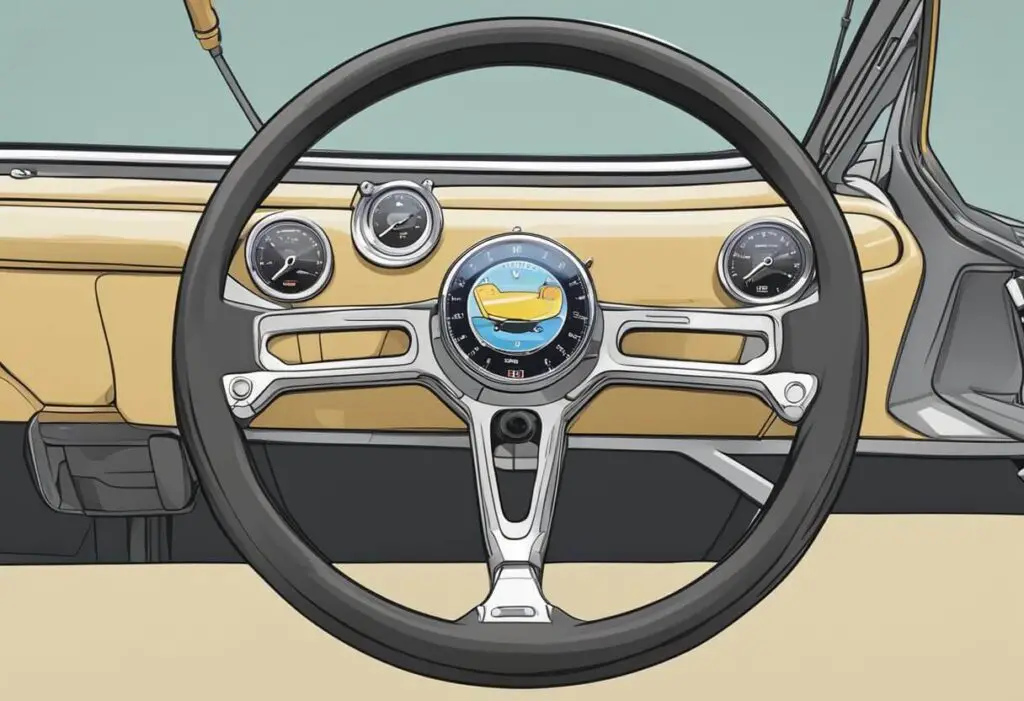
Dune buggies are all about customization, and the steering wheel is no exception. Upgrading your steering wheel can improve both the look and feel of your buggy. Here are a few popular upgrades and customization options to consider.
Enhanced Grip Options
One of the most common reasons for upgrading a dune buggy’s steering wheel is to improve grip. A better grip can help drivers maintain control in rough terrain and during high-speed maneuvers. There are several options for enhancing grip, including:
- Foam or rubber grips: These can be added to the existing steering wheel to provide a more tactile surface.
- Custom steering wheel covers: These are available in a variety of materials, including leather, suede, and synthetic fibers.
- Aftermarket steering wheels: Many aftermarket steering wheels are designed with enhanced grip in mind, featuring textured surfaces and ergonomic shapes.
Steering Quick Release
Another popular customization option is a steering quick release. This mechanism allows the steering wheel to be easily removed from the steering column, making it easier to get in and out of the buggy. It can also be a security feature, as the steering wheel can be taken with the driver when leaving the vehicle.
Steering Wheel Adapters
Finally, steering wheel adapters can be used to allow the installation of aftermarket steering wheels. These adapters are designed to fit specific steering columns and aftermarket wheels, ensuring a secure and functional connection. It is important to choose an adapter that is compatible with both the steering column and the desired aftermarket steering wheel.
Overall, upgrading and customizing a dune buggy’s steering wheel can be a fun and practical way to improve the driving experience. With options for enhanced grip, quick release mechanisms, and steering wheel adapters, there are plenty of ways to make your buggy stand out from the crowd.
Troubleshooting Common Issues
Steering Wheel Play
One of the most common issues with dune buggy steering wheels is play, which can be caused by several factors. Loose or worn tie rod ends, ball joints, and steering gearboxes are the most common culprits. To troubleshoot this issue, the driver should first check the tie rod ends and ball joints for any looseness or damage. If the tie rod ends or ball joints are worn or damaged, they should be replaced immediately.
Another common cause of steering wheel play is a worn steering gearbox. The driver can check for this issue by moving the steering wheel back and forth while the engine is off. If there is excessive play, the steering gearbox may need to be replaced.
Steering Noise Problems
Excessive noise coming from the steering system is another common issue with dune buggies. This noise can be caused by several factors, including worn or damaged tie rod ends, ball joints, and steering gearboxes. To troubleshoot this issue, the driver should first check the tie rod ends and ball joints for any looseness or damage. If any of these parts are worn or damaged, they should be replaced immediately.
Another common cause of steering noise is a worn steering gearbox. The driver can check for this issue by moving the steering wheel back and forth while the engine is off. If there is excessive noise, the steering gearbox may need to be replaced.
Steering Wheel Alignment
Proper steering wheel alignment is critical for safe driving. Misaligned wheels can cause excessive tire wear, poor handling, and unsafe driving conditions. The driver should check the alignment of the wheels regularly, especially after hitting a curb or pothole.
To check the alignment, the driver should first make sure the wheels are pointed straight ahead. Then, they should measure the distance between the front and rear of the wheels on both sides of the vehicle. If the measurements are not within the manufacturer’s specifications, the wheels may need to be realigned.
So, dune buggy steering systems can experience several common issues, including play, noise, and misalignment. By troubleshooting these issues and addressing them promptly, drivers can ensure safe and enjoyable off-road driving experiences.
Regulations and Standards
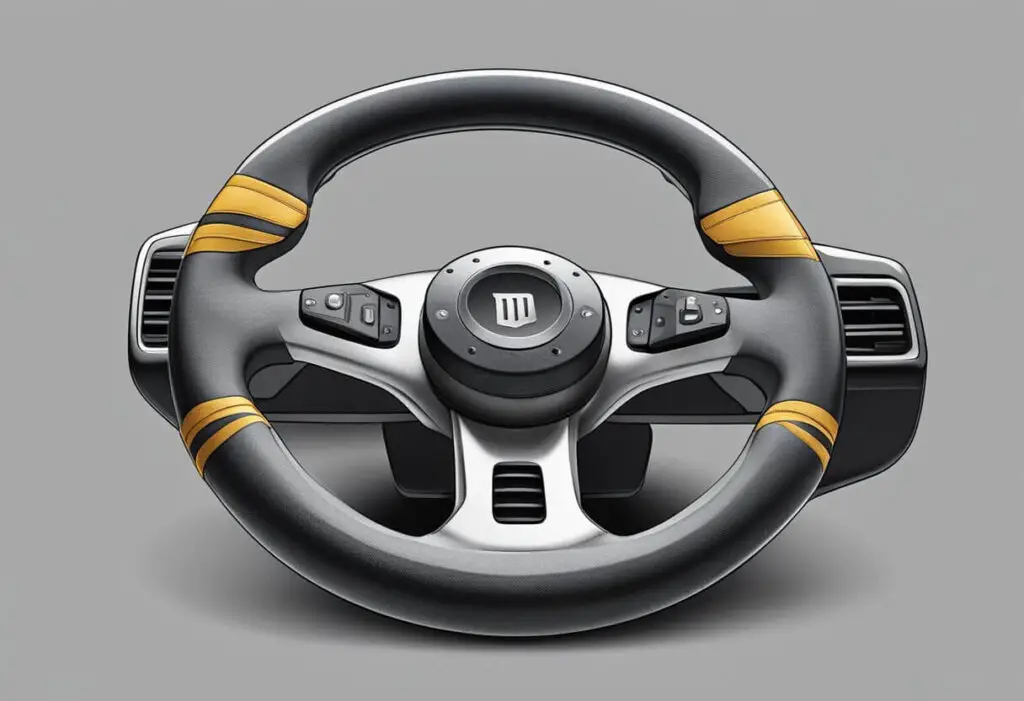
Road Safety Compliance
Dune buggies are classified as off-road vehicles, and as such, they are not subject to the same safety regulations as regular passenger vehicles. However, there are still some basic safety requirements that need to be met. For example, in California, all dune buggies must have seat belts and shoulder belts or safety harnesses that are properly fastened when the vehicle is in motion. Additionally, the driver and all passengers must wear helmets.
Dune buggies are not designed or registered for public road use and do not need to meet passenger vehicle safety standards. If used on public roads, dune buggies must comply with applicable safety standards.
Racing Specifications
Dune buggy racing is a popular sport, and there are specific regulations and standards that apply to racing dune buggies. For example, the International Conference of Sports Car Clubs (ICSCC) has established rules and regulations for dune buggy racing. These rules cover everything from safety equipment to engine specifications.
In general, racing dune buggies are required to have a roll cage, a fire extinguisher, and a five-point safety harness. The engine must be a Volkswagen Type 1 engine, and it must be modified to produce a minimum of 100 horsepower. The suspension must be modified to provide maximum traction, and the tires must be designed for off-road use.
So, while there are some basic safety requirements that need to be met for dune buggies, they are not subject to the same safety standards as regular passenger vehicles. However, if a dune buggy is used on public roads, it must comply with all applicable safety standards. Additionally, racing dune buggies are subject to specific regulations and standards established by organizations such as the ICSCC.
Historical Evolution of Steering Wheels
Early Designs
The earliest cars were steered using a lever that controlled a system of ropes or chains that turned the wheels. This design was difficult to control and required a lot of physical strength to operate. In 1894, the French carmaker Panhard introduced a steering wheel that replaced the lever. This design made it much easier to control the car and quickly became popular.
By 1914, the steering wheel had become the standard way to steer a car. At first, the steering wheel was a simple wooden or metal wheel that was attached directly to the steering column. Over time, designers began to experiment with different materials and shapes to create more comfortable and ergonomic designs.
Technological Advancements
In the 1963s, General Motors introduced the tilt steering wheel. This was a luxury item in cars that allowed the driver to adjust the angle of the steering wheel to their liking. This feature became increasingly popular and is now a standard feature in most cars.
Power steering was first introduced in the 1951s. This system used hydraulic pressure to assist the driver in turning the wheels, making it much easier to control the car. Today, most cars come equipped with power steering as a standard feature.
In recent years, steering wheel technology has continued to evolve. Many modern cars feature steering wheels with built-in controls for audio, climate, and other features. Some cars even have steering wheels that can detect when the driver is tired or distracted and alert them to take a break or pay attention to the road.
Overall, the steering wheel has come a long way since its early days as a simple lever. Today, it is a sophisticated piece of technology that plays a crucial role in keeping drivers safe on the road.

